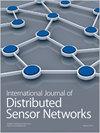Research on Visual SLAM Navigation Techniques for Dynamic Environments
IF 2.5
4区 计算机科学
Q3 COMPUTER SCIENCE, INFORMATION SYSTEMS
引用次数: 0
Abstract
Synchronous positioning and mapping mainly realize the functions of self-positioning and environment map construction for intelligent navigation technology. In order to solve the problems of low positioning accuracy and poor mapping effect of existing SLAM (simultaneous localization and mapping) systems in indoor dynamic environments and to improve the positioning accuracy, timeliness, and robustness of visual SLAM systems in dynamic environments, an improved visual SLAM method is proposed. Aiming at the inconsistency between the direction of dynamic objects and static background optical flow, this method adopts a high-real-time dynamic region mask detection algorithm to eliminate the feature points in the dynamic region mask, remove the camera motion optical flow according to the original feature information, and then cluster the optical flow amplitude of dynamic objects so as to realize the dynamic region mask detection and eliminate the dynamic signpost points combined with the polar geometric constraints. In order to verify the effectiveness of the improved algorithm, the three evaluation indexes of system accuracy, real-time performance, and the amount of drift are analyzed and verified, respectively, on the TUM dataset. The results show that the proposed algorithm not only has good real-time performance but also improves the accuracy of the system and reduces the amount of drift.动态环境下视觉SLAM导航技术研究
同步定位测绘主要实现智能导航技术的自定位和环境图构建功能。为了解决现有SLAM系统在室内动态环境中定位精度低、映射效果差的问题,提高视觉SLAM系统的定位精度、及时性和鲁棒性,提出了一种改进的视觉SLAM方法。针对动态物体方向与静态背景光流不一致的问题,该方法采用高实时的动态区域掩模检测算法,去除动态区域掩膜中的特征点,根据原始特征信息去除相机运动光流,然后对动态物体的光流幅度进行聚类,实现动态区域掩模检测,并结合极几何约束消除动态路标点。为了验证改进算法的有效性,分别在TUM数据集上分析和验证了系统精度、实时性能和漂移量三个评价指标。结果表明,该算法不仅具有良好的实时性,而且提高了系统的精度,减少了漂移量。
本文章由计算机程序翻译,如有差异,请以英文原文为准。
求助全文
约1分钟内获得全文
求助全文
来源期刊
CiteScore
6.50
自引率
4.30%
发文量
94
审稿时长
3.6 months
期刊介绍:
International Journal of Distributed Sensor Networks (IJDSN) is a JCR ranked, peer-reviewed, open access journal that focuses on applied research and applications of sensor networks. The goal of this journal is to provide a forum for the publication of important research contributions in developing high performance computing solutions to problems arising from the complexities of these sensor network systems. Articles highlight advances in uses of sensor network systems for solving computational tasks in manufacturing, engineering and environmental systems.

 求助内容:
求助内容: 应助结果提醒方式:
应助结果提醒方式:


